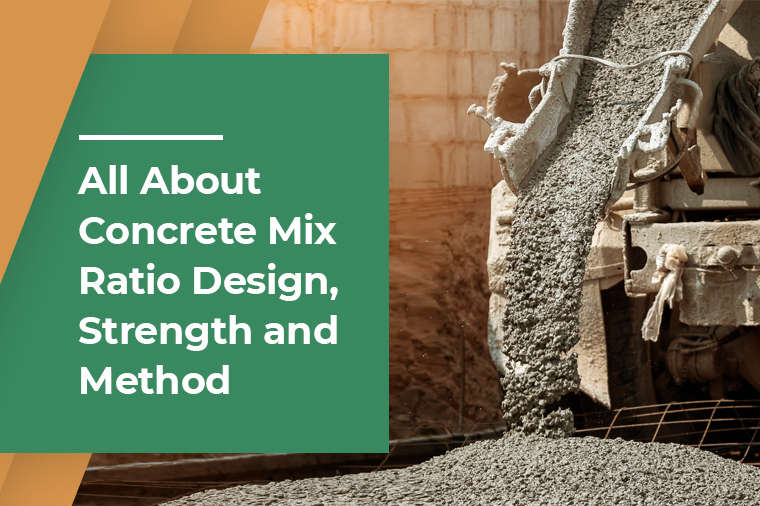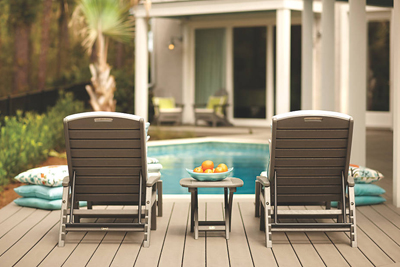All About Concrete Mix Ratio Design, Tools, Strength, and Method

To All Our Valued Customers, Over the past few years, the Covid 19 Pandemic has forced us to adapt and change the way we do things on a day-to-day basis. Florida Lumber is no exception. To make sure that we remain strong and competitive in the market for the years to come, Florida Lumber has had to adjust and change our vision for the future. In the last 2 years, we have stopped selling Sheetrock and drywall products, roofing felt and roofing materials, and have even closed on Saturdays.
Over the last few months, we have been transitioning our way out of the door supply business so on August 31, 2022, our door shop will stop assembling doors. We will continue liquidating our doors from inventory until we are out of material.
Some customers have asked if we are closing or even moving locations. To set the story straight, we are not closing or selling the business and we are not moving. These changes are all part of our new vision and path to continue serving South Florida and increasing our footprint in the construction supply industry.
Our focus is going to be on Lumber, Construction Materials, Rebar Fabrication and Rebar Accessories. As we have liquidated some of the items that we don’t sell anymore we have created more space to buy a larger volume of our core items and pass on the savings to our customers.
In the next year you will start seeing changes that will help improve our ability to serve you, our customers. We appreciate your business and your patience as Florida Lumber’s new vision becomes reality.
A Todos Nuestros Valiosos Clientes En los ultimos anos, la pandemia de el Virus (Covid 19) nos ha forzado a adaptarnos y cambiar la forma de hacer cosas en el dia a dia. Florida Lumber no ha sido una excepcion.
Para asegurarnos de mantenernos fuertes y competitivos en el mercado en los anos venideros, Florida Lumber ha tenido que ajustar y cambiar nuestra vision para el futuro. En los dos ultimos anos hemos dejado de vender los productos de yeso (sheetrock), paneles de yeso (drywall), tela asfaltica (roofing felt), materiales de techo y cerramos los Sabados. En los ultimos meses, hemos estado en transicion para salir del negocio de suministro de puertas, en Agosto 31, del 2022 nuestra tienda de puertas dejara de construir y/o cortar puertas. Vamos a continuar liquidando nuestro inventario de puertas haste que terminemos todo el material. Algunos de nuestros clientes han preguntado si estamos cerrando o si nos estamos moviendo a otra localidad. La verdad es que no estamos cerrando, no estamos vendiendo y no estamos cambiando de localidad. Estos cambios son todos parte de nuestra nueva vision y camino a continuar sirviendo al estado sur de la Florida y incrementar nuestras huellas en la industria de suministros de construccion.
paneles de yeso (drywall), tela asfaltica (roofing felt), materiales de techo y cerramos los Sabados.
En los ultimos meses, hemos estado en transicion para salir del negocio de suministro de puertas, en Agosto 31, del 2022 nuestra tienda de puertas dejara de construir y/o cortar puertas.
Vamos a continuar liquidando nuestro inventario de puertas haste que terminemos todo el material. Algunos de nuestros clientes han preguntado si estamos cerrando o si nos estamos moviendo a otra localidad.
La verdad es que no estamos cerrando, no estamos vendiendo y no estamos cambiando de localidad. Estos cambios son todos parte de nuestra nueva vision y camino a continuar sirviendo al estado sur de la Florida y incrementar nuestras huellas en la industria de suministros de construcción.
2431 N.W. 20TH ST.
MIAMI, FL 33142
PHONE: (305) 635-6412
Sales Fax: (305) 633-4054
Accounting Fax: (305) 635-3723
Email: sales@tloridalumber.com

What do you think makes a building structure strong? Well, the answer is it’s the concrete mix that makes the building strong and sturdy. What kind of slab or brick will the concrete form into largely depends on the concrete mixture; The ratio decides the consistency of the mixture.
To be precise here is a small table that is going to give you a brief idea about the ratio of concrete mixture required for different things such as tiles, slabs, etc. When we talk about concrete mixture, we mean four things. Namely, cement, sand, stone, and water.
If you are one of those people who believe in doing things yourself this table will help you get an idea about concrete mixtures.
|
Generally used for |
Ratio |
|
Small slabs or fence posts >> |
1:2:4 |
|
Slabs, floors, walls, footings >> |
1:3:3 |
|
Patio walks slabs >> |
1:2:5:3 |
|
Driveways and exterior slabs >> |
1:2:3 |
|
Commercial floors and slabs >> |
1:2:2 |
Generally, whenever anyone is mixing concrete mixtures, we need to keep one thing in mind and that is whenever we are talking about ratios in concrete mixing there is a particular order in which the ratio is written. And, the order is cement, sand, stone, and water. So, when we say 1:2:4 we mean cement=1, sand= 2, water= 4. Similarly, when we say 1:2:5:3 we mean 1=cement, 2= sand, 5= stone, and 3= water.
The concrete mix depends on the strength required that is denoted as PSI. For example, a concrete mixture of 1:3:3 will effectively produce 3000 PSI which is ideal for a shed slab.
Tools That Make Mixing Concrete Easier
Concrete has a tendency to get hardened in minutes as soon as the water is absorbed completely. That is why most people face difficulties in mixing it with hand especially if the quantity is more. Small quantities of concrete are best mixed with hand however, for a larger quantity of mixes tools are required to ensure the mixture is properly churned and mixes well.
Some essential tools that you cannot possibly do without if you are mixing concrete are Screeds, protective gears, rubber boots and gloves, wheelbarrows, shovels, portable mixtures, saws, etc.
These are some of the basic tools that are required to mix concrete.
-
Screeds are long and straight boards that are used to smooth the rough surfaces when the concrete is poured.
-
Protective gears are glasses and hearing aids used while mixing concrete. Concrete mixing is a complicated task and it may be dangerous for your eyes and ears. The protective gears save you from any kind of accident while mixing the concrete.
-
Rubber boots and gloves help you to mix the concrete smoothly. It prevents the skin from getting exposed to the concrete. It becomes easier for you to walk through the concrete when you are wearing boots.
-
Wheelbarrows are used to carry a small amount of concrete from one place to another. It makes concrete mixing hassle-free.
-
Shovels are used to lift a small amount of concrete and pour it into a particular place.
-
Portable mixtures are small-sized mixtures that help in mixing concrete on the site.
-
Saws help up to cut and remove the old concrete.
Types of Concrete Mix Ratio - Mix Designs
There are basically three types of concrete mixes. These are- Nominal, Standard, and Designed mixes.
-
Nominal Mix- Ratios such as 1:2:4 and 1:1:5:3 fall under nominal mix. This kind of mixture has marginal strength under usual circumstances.
-
Standard Mix- Ratios such as 1:3:6 and 1:1:2 are known as standard mixes.
-
Designed Mix- The designed mixture is the kind of mixture where the concrete mixture ratio is defined by the designer. The comprehensive strength of designed mixes varies from 50 MPa to 70 MPa.
Methods of Proportioning of Concrete Mix
-
Arbitrary Method- As the name suggests arbitrary method implies that the quantity of water required for mixing is determined on the workability based on which the concrete mix ratio is determined. There is no definite ratio in this method of concrete mixing.
-
Trail Mixture Method- When cement along with fine and coarse aggregate is mixed with water and poured into a cylindrical vessel before it is poured into a particular container then the method is called the trail mixture method. Once the vessel is emptied the process is again repeated till the time the desired quantity is achieved.
-
Fineness Modulus Method- The fitness modules method is one of the most practiced methods of concrete mix ratios. Here, in this method both coarse and fine aggregate is passed through 10 standard sieves. If we require a higher fitness modulus the aggregate needs to be coarse. In case the aggregate is fine then the fitness modulus will be below.
-
Minimum Voids Method- According to this method the concrete that has the minimum voids is the densest. In this method, the fine aggregate is used to fill the voids in the concrete so that we can get dense concrete.
Additional Read:
HOW MUCH DO BUILDING MATERIALS COST (TO BUILD A HOUSE)
Conclusion
Therefore, we can say that the strength of the concrete totally depends on the concrete mix ratios. The same ratio defines what the concrete mix will be used for. For example, whether it is going to be used to make a slab, a driveway, or commercial floors. Depending on the use the tool is decided to mix the concrete and depending on the amount of concrete to be used the process of mixing concrete is decided. Thus, it can be said that the entire process of mixing concrete is linked to one another. First, we decide what we need to build, second, we decide what is the PSI needed to be based on which the ratio is decided. And then finally based on the quantum of a concrete mixture that is required the tools and process of concrete mixing are decided.
The most important thing that we need to keep in mind while mixing concrete is that any kind of concrete mixture is made of four ingredients- Cement, sand, stone, and water. Only the proportion varies. Do feel free to share your ideas, experiences, or requirement with us using our contact form.

